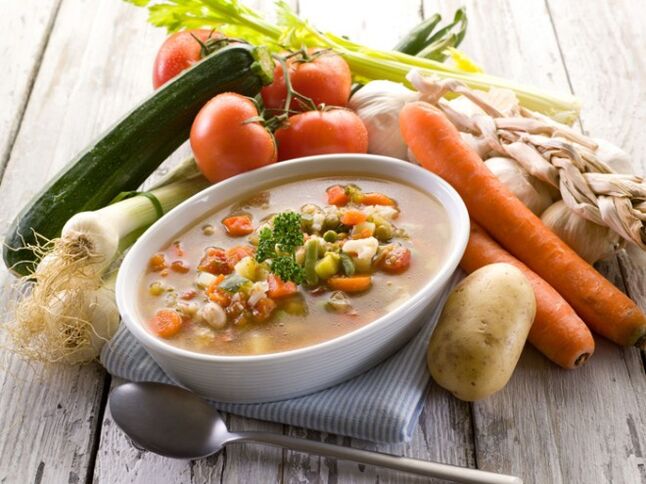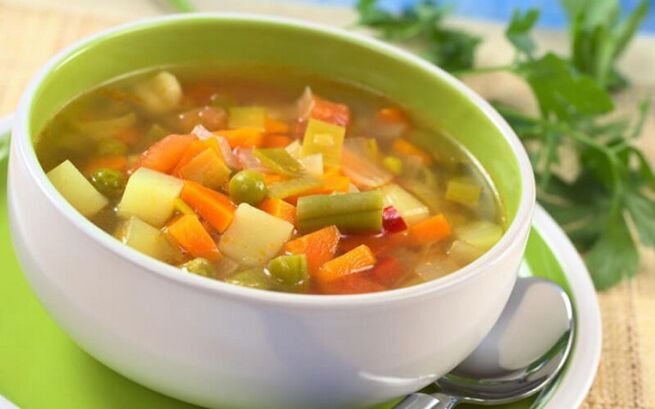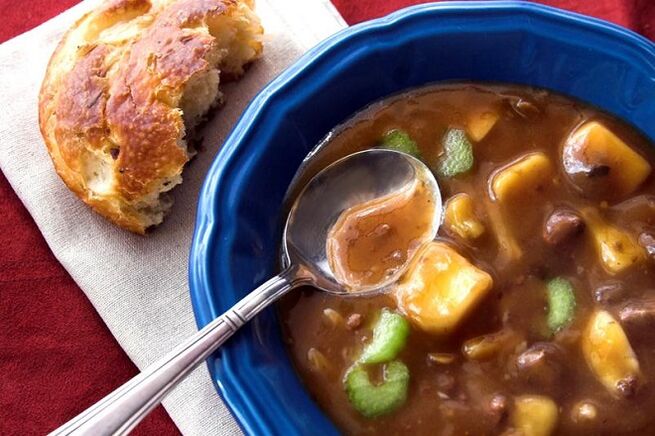In the age of speed and fast food, gastric diseases are spreading at an accelerated rate. After all, nutrition for gastritis, pancreatitis and ulcers plays an almost decisive role. In this material, we try to find out what a diet for gastritis, pancreatitis or ulcers is, what to do to treat them further, how to eat right?
What is important

The question of why diet is important for gastritis often means something else: "What can you eat with gastritis, pancreatitis or ulcers, and which foods should be discarded? " Each diet, with an exacerbation of gastritis symptoms, dictates a seriesof rules regarding the preparation and timing of meals, which is an integral part of the treatment not only of the described disease, but also of pancreatitis, as well as gastric ulcers. In other words, dietary nutrition is the most important component of the treatment of gastritis, pancreatitis and gastric ulcers at almost all stages.
Nutrition for gastritis of the stomach should be balanced and gentle, it is to this goal that the diet for acute gastritis is subordinated. Its tight fit will allow you to avoid excruciating abdominal pain or other symptoms of gastrointestinal diseases, will help stop the inflammatory process on the gastric mucosa, and its treatment will be moderate.

The diet for gastritis of the stomach means:
- fractional meals;
- tracking the temperature of the products consumed;
- adequate preparation of food for the patient;
- refusal of alcoholic and carbonated drinks, tobacco;
- choose simple foods without preservatives and spicy sauces;
- exclusion from the menu of spices and condiments;
- food must be chewed thoroughly.
Any diet for the exacerbation of gastritis, pancreatitis or ulcers, calculated for a week or more, will not be beneficial if the rules of a healthy lifestyle are not followed (giving up bad habits and regular physical education and sports). Only if these conditions are met, nutrition for gastritis, compiled by a nutritionist, will bring the expected results, and the treatment of this organ, as well as the accompanying symptoms of the disease, will be minimized.
What products can you
Some food items have anti-inflammatory properties or do not irritate the stomach lining. The way food is prepared is also important, because the way food is prepared affects their acidity. Compliance with a diet for inflammation of the gastric mucosa also regulates the frequency of meals. With a history of gastric diseases (pancreatitis, gastritis, ulcers), it is necessary to sit at the table at least five times a day.
In this case, you should not engage in gluttony, if you are not satisfied with your meal, it is better to take it back after a while. If low or high acidity of the stomach has caused inflammation of its mucous membrane (gastritis), it is necessary to pay attention to the temperature of the dishes that make up the menu. For gastric diseases, too hot or cold foods are not recommended. The food should be hot, so it is less irritating to the gastrointestinal mucosa and does not cause symptoms of gastric diseases.
The choice of the menu for gastritis must take into account the content of hydrogen ions in the stomach, in other words, its acidity. For example, fried, fatty and spicy foods, pickles and homemade canned food are equally contraindicated for free inflammation of the stomach with high and low Ph damage of the gastrointestinal tract of the main digestive organ.

In many ways, the digestive system's reaction to food depends on their consistency. Food for exacerbation of gastritis should consist mainly of liquid, puree, in extreme cases, grated food. In this form, it passes through the esophagus faster, preventing the manifestation of symptoms of gastric diseases (pancreatitis, gastritis, ulcers). Specifically, what can be consumed for gastritis will be told by a nutritionist or an individual nutritionist who has one, and their job is also to make a list of foods for a week or more for a diet meal. A person with a medical degree should also deal with the treatment of gastrointestinal diseases.
High pH
So, what can you eat with gastritis, pancreatitis or ulcers, having increased stomach acid, so that the symptoms of these diseases appear as rarely as possible. The primary task of the diet for inflammation of the gastric mucosa is to minimize the consumption of those foods that represent a mechanical, chemical and thermal danger. It has already been said about the temperature of food for patients with gastritis, pancreatitis or ulcers, we repeat, who suffer from stomach diseases should be excluded from the diet of excessively hot or cold foods.
Excessively coarse food, cabbage, radishes, turnips or undercooked cereals and bran bread can damage the mucous membranes of the gastrointestinal tract, it is necessary to get used to eating without them. Such foods increase the symptoms of digestive system diseases, which include ulcers, pancreatitis and gastritis.

Chemical irritants in inflammatory processes in the stomach are:
- all types of alcohol;
- sweet pastry;
- fatty broths;
- drink;
- garlic and onions which are useful at first glance;
- unripe fruits;
- acidic juices;
- black bread.
In case of exacerbation of the symptoms of gastritis, ulcers or pancreatitis, the abuse of such products can lead to long-term treatment of these diseases.
At lowered pH
The list of foods that make up a diet for stomach diseases (pancreatitis, ulcers or gastritis) should begin with the fact that you cannot eat with gastritis with low stomach acid, there are fewer such foods. With inflammation of the mucous membrane of the digestive organs, hard-to-digest foods, fish and meat with a high fat content, smoked food and canned food are prohibited, even at home. You will also need to quit smoking tobacco if you don't want to spend time and money treating stomach ailments, such as pancreatitis or ulcers.

For a complete meal we recommend the following foods:
- rabbit meat;
- some varieties of poultry meat (chicken, turkey);
- milk derivatives;
- baked fruit (apples and pears);
- onions, garlic and sour berries;
- some juices, for example, birch.
Such food increases the acidity in the gastric fluid and prevents the manifestation of symptoms of gastrointestinal dysfunction. Therefore, no treatment is required.
Menu for the week
There is a category of people who suffer from stomach ulcers, pancreatitis or gastritis, due to lack of time to organize diet meals for at least a week. For such people, a list of dishes is offered for seven days:

- 1st and 3rd day.For breakfast you can eat a portion of Hercules and a glass of compote. Lunch will consist of several steamed cheesecakes. For lunch we recommend mashed potatoes, vegetable soup with breadcrumbs, boiled fish and compote. Between lunch and dinner you can treat yourself to a cup of tea with unleavened biscuits. For dinner, cutlets, spaghetti and tea are great.
- 2nd, 4th and 6th day.You should start the day by eating baked apples with a portion of cheesecake. While you wait for lunch, you should stick to jelly. Vegetable soup, steamed fish and natural mineral water will be useful for lunch. For lunch lovers, a sugar-free tea with breadcrumbs can be recommended. For dinner, you can prepare the casserole and cottage cheese jelly.
- 5th, 7th day.You can start the day with boiled hard-boiled eggs and a cup of compote. The second breakfast should consist of cheesecake and tea. In the middle of the day, it won't harm a vegetable stew, mashed potato soup, and jelly. For an afternoon snack, you can offer fruit puree, a portion of kefir and crackers. For dinner it is appropriate to serve porridge, boiled fish and a glass of rosehip broth.
A diet like this is unlikely to need treatment for symptoms of gastritis, ulcers, or pancreatitis.































